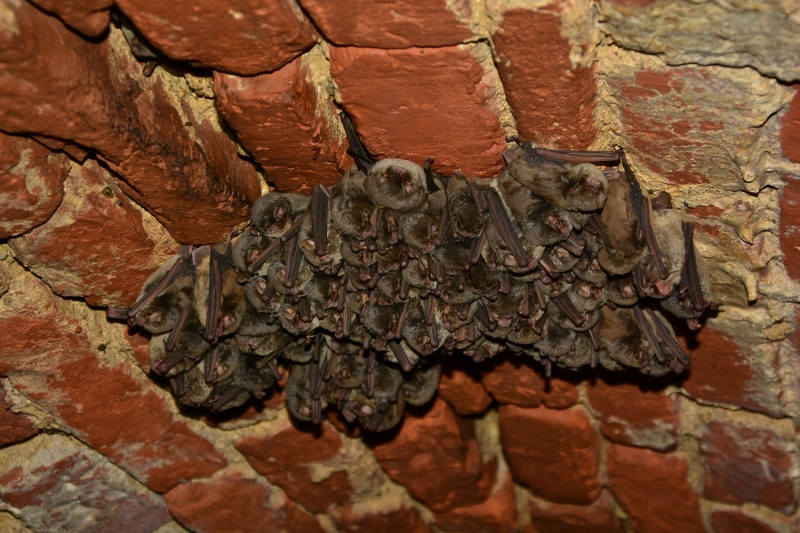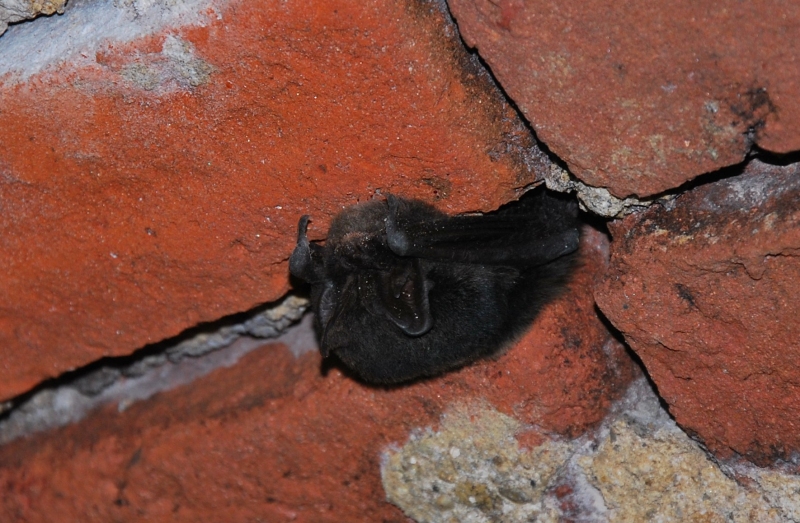Schreibers´s bent-winged and Bechsteins bat and barbastelle
Common bent-wing bat, also known as Schreibers´s bent-winged bat (Miniopterus schreibersii) is a medium-sized bat with a weight of 10-16 g and has a grey fur and short ears. It is the fastest flying European bat as it can fly with a speed up to 55 km per hour. Bent-winged bat likes to congregate in large groups. This rare and endangered species finds shelters and roosts in caves, tunnels, mines and abandoned buildings. With the method of marking bats with forearm bands the experts found that bent-winged bats, which have a spring and autumn roost in the cellars of castle Grad, overwinter in the Huda Luknja cave near Mislinja about 80 km away.

A group of the Schreibers´s bent-winged bat in the cellers of castle Grad ![]() G. Domanjko
G. Domanjko
Western barbastelle bat (Barbastella barbastellus) and Bechstein´s bat (Myotis bechsteinii) are both forest species of bats. Barbastella is a small, just 5.8 cm big bat with a short muzzle and broad ears. Barbastelle are uniformly dark in colour. This very skilled flier without problems hunts through old deciduous forests with a rich herbaceous and shrubby layer. Its main prey are smaller insects and spiders. It finds roost under the loose bark or in crevices, females give birth to pups in tree cavities or occasionally in old buildings. It hibernated in old tunnels or caves.
Bechstein´s bat is recognizable by its very long and broad ears and small body. Adult animals have fur that is reddish-brown on the dorsal side and light gray on the ventral side. It lives in large, old deciduous forest complexes with sufficient amount of tree holes and trunk crevices. It feeds on insects like moths, beetles, crane-flies, spiders, caterpillars and bush-crickets. It is mainly threatened by intensive forest management.

The Barbastelle ![]() G. Domanjko
G. Domanjko








